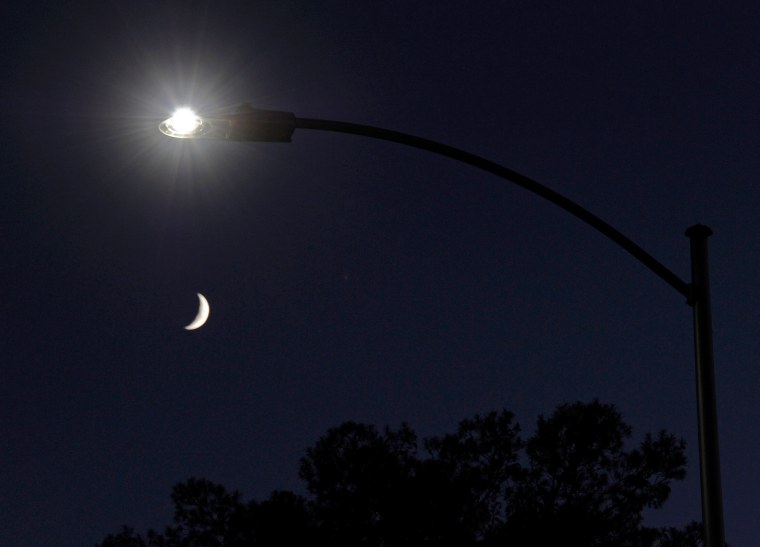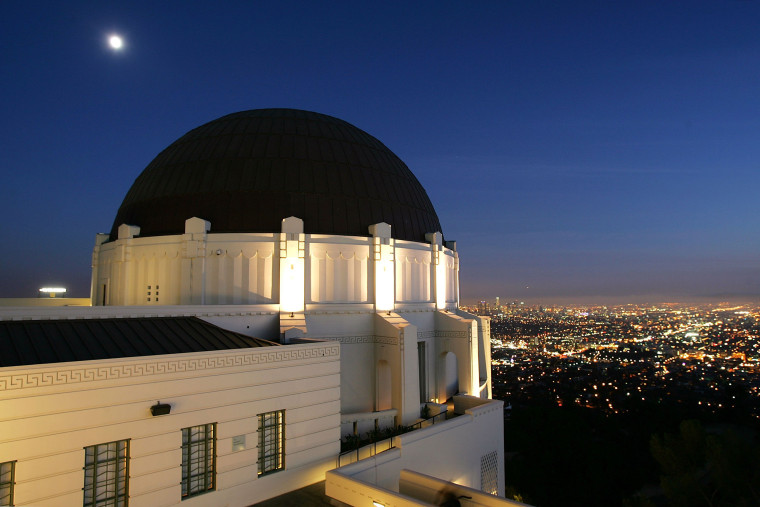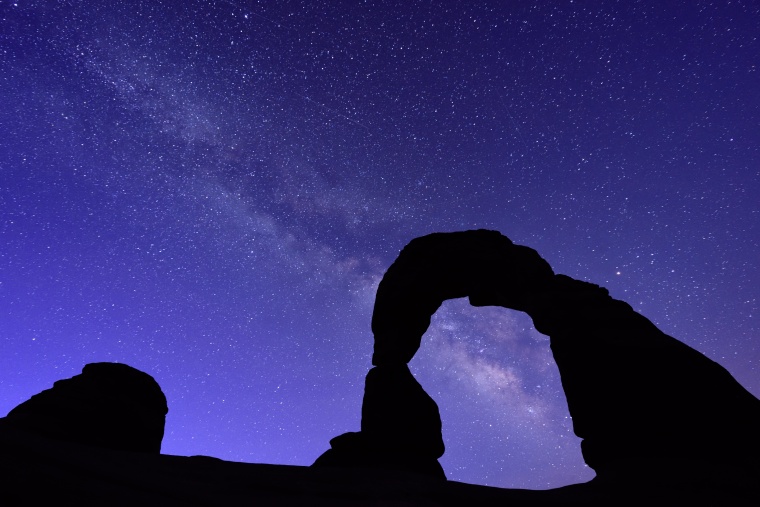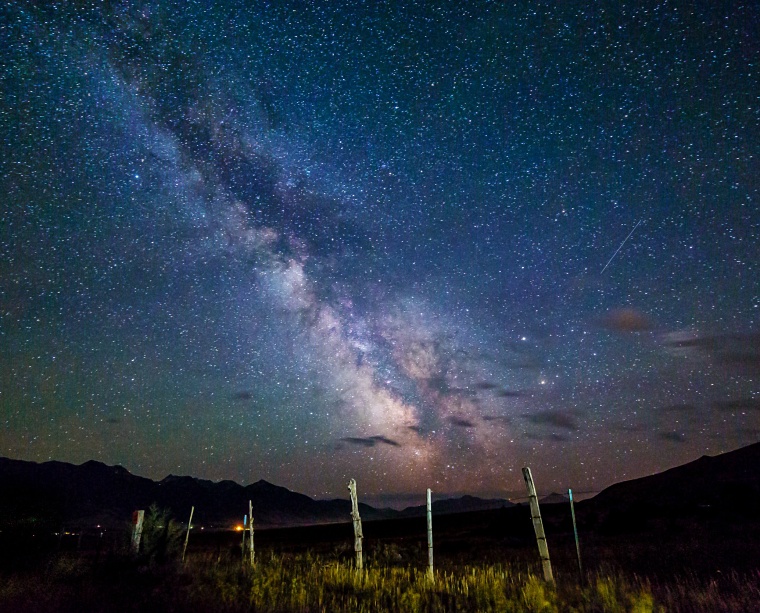A few thousand stars in the Milky Way galaxy should be visible to the naked eye as you look skyward on any given night. Alas, conditions are rarely ideal in many places, largely because artificial lights on the ground create an ambient glow that illuminates the sky and makes it difficult to see anything but the brightest stars — and maybe a planet or two.
Related: The Hunt For Alien Megastructures is On
As major cities adopt newer, more energy-efficient LED streetlights, the problem has only gotten worse. New bulbs may save millions in electricity costs, but the blue glare given off has created a halo of light pollution that has caused fewer and fewer stars to be visible on even the clearest night. It’s a growing problem for astronomers, who often end up in far-flung corners of world just to find dark skies, but the intrusion of these bright lights is now taking a toll on everyone.
“We just lost something that I think is part of what once made us human,” says John Barentine, program manager at the International Dark-Sky Association (IDA). “Going back into our distance past before there was agriculture and civilization, humanity had this instant connection to what was happening in the sky, day and night.”

Now, about 80 percent of people in the United States live in places where they can’t easily see distant stars or even the white glow of the Milky Way, Barentine explains. High temperature LEDs above 5,500k produce a daylight hue that can cause eye damage and affect our circadian rhythms over time, creating sleep issues that may lead to depression and obesity, according to the American Medical Association.
Low Lights, Big City
One city might have found a way to maximize the benefits of LED streetlights, while eliminating the affecting glow. Last year, Phoenix’s city council voted to replace the bulbs in all 90,000 lamps on streets and in parks with yellow-hued 2700k LEDs, reducing light pollution while offering safer driving conditions and fewer health effects. It's a solution for everyone, but the astronomers might just be the ones with the most to gain.
Few places have witnessed the loss of the naturally dark night sky like the Griffith Observatory in Los Angeles. The iconic building, made famous by dozens of Hollywood movies, is the spot where many in the well-lit city can see stars through a telescope for the first time. Anthony Cook, the astronomical observer at Griffith, has worked there since 1978 and has seen a large change in visibility since his first years on the job.

“We have a buffer of approximately a mile around us from a lot of bright lights because we're in the park, which has a lot of wilderness around it,” Cook says. “Never the less you can see the effects of the city, definitely, so we're kind of a tiny island of relative darkness in a huge sea of urban lighting.”
In recent years, Griffith, which hosts hundreds of children and curious adults each night, has had to focus its telescope on easy-to-see objects, such as planets or the moon’s craters, as the glow of the city increases. Cook says he now has to travel as far as Joshua Tree National Park, more than three hours away, to even get a glimpse of celestial bodies that are more difficult to spot.
A Natural Resource
National parks are among the few places in the U.S. where dark skies are intentionally preserved. While Joshua Tree is still affected by the glow of L.A., places like Big Bend National Park in southern Texas have little or no artificial light pollution. The National Parks Service (NPS) is leading the way on data collection of dark skies and light pollution, and even created a special division that researchers and monitors these concerns, aptly named the Natural Sounds and Night Sky Division.
“A lot of people never thought of the night sky as a resource, like the lakes, forest, and wildlife,” says Bob Meadows, a physical scientist for the division. “But unlike other natural resources the night sky is a completely recoverable resource by simply turning off our lights.”

The solution may sound simple enough, but getting millions of people to turn off unnecessary lights is anything but easy. As a small organization that partners with the NPS and grassroots movements across the world, the IDA helps people find ways to combat light pollution, whether they want safer lighting for themselves or the environment, or they want to see the Milky Way a little clearer.
Reclaiming the Night Sky
The victory in Phoenix has become a rallying cry for astronomy buffs and those looking to protect the environment and dark skies alike. Kelly Beatty, secretary of the IDA's board and contributing editor at Sky & Telescope magazine, says the successful vote was a major step forward, and his hope is that other large cities with take notice.
"My sense is that it has taken decades for the lighting to get this bad, so consequently it will probably take decades to make it better,” Beatty says. “But the revolution in lighting that these LEDs represent gives us a chance. They give us a chance to look at the problem anew."
Related: Geoengineering Could Pose Big Problem for Astronomers
Despite recent efforts, light pollution will continue to glow as cities sprawl across the landscape. But many who have never lived with a clear view of the night sky hope to one day reestablish our age-old connection with distant stars and planets. According to noted astronomy author Bob Berman, it might just be a matter of changing priorities.
“No one is saying that cities shouldn't be well lit,” Berman says. “Everything has its time and place, and the same is true of light and darkness. And there is a place for darkness, and, I think that is slowly being realized."
